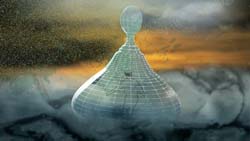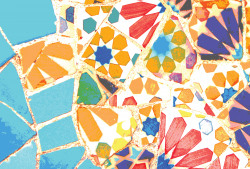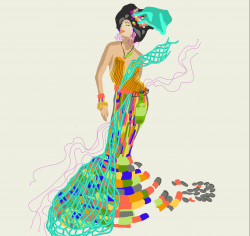Time-based art is on the rise. The formerly little-known movement, consisting of art that changes as you view it, is rapidly gaining popularity among contemporary artists. A clear reflection of the ways in which technology has influenced society, the time-based genre presents a marriage of art and technology that makes for a dynamic visual experience. And with the December opening of the Smithsonian American Art Museum’s new gallery, “Watch This! New Directions in the Art of Moving Images,” the trend has gained even more momentum.
“Watch This!” stands out from your typical art gallery experience, packing an impressive array of multimedia pieces in an unassuming studio space. The new gallery is the first step of a Smithsonian-wide initiative to expand its inclusion of film, video and media arts. Though it features just nine works from the genre, it effectively highlights the wide range and styles of video art, from Peter Campus’s use of video overlay to form a moving portrait in Three Transitions, to the manipulation of an illustrated 3-D movie scene in Kota Ezawa’s LYAM. The gallery also serves as a historical survey of time-based art. With pieces from 1969 to 2009, “Watch This!” clearly narrates how the form has developed as technology advanced, from the rise of Nintendo to the modern day.


While the video art genre might not appeal to the “back in my day, bread cost a nickel” set of Smithsonian patrons, the exhibit is an absorbing compilation of some of the most prominent artists of the style, which open-minded viewers will enjoy. Jim Campbell’s Grand Central Station #2 (2009) and Reconstruction (2007), which utilize light-emitting diodes, stand out as two of the gallery’s most striking pieces. In his depiction of Grand Central Station, Campbell uses what appears to be a hardwood floor—actually composed of transparent plastic—which reveals LEDs flashing underneath, creating the semblance of shadow-like figures moving throughout the station. In this same style, Reconstruction uses lights flashing in a pattern to create the astonishing illusion of cars and people moving across a dark street.
One of the most remarkable time-based art pieces, Nam June Paik’s “Electronic Super Highway,” is not featured inside the gallery itself. Located in the museum’s permanent Modern Art Collection, Paik’s piece comments on the prevalence of the media in society through a map of the United States with neon wires and televisions of varying size, each displaying videos representative of each of the 50 states. For those who leave the gallery unconvinced of time-based art’s merit, Paik’s work will leave them in awe of the ways in which technology has transformed our culture.
“Watch This!” will not satisfy all artistic tastes, but this addition to the American Art Smithsonian marks the rise of a new genre in contemporary art. After seeing an exhibit that is so clearly rife with talent, traditionalists may find themselves unexpectedly drawn to the art of the digital age.




